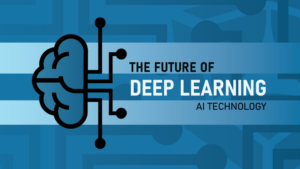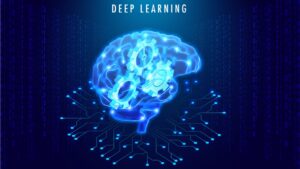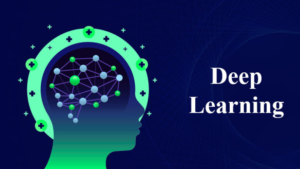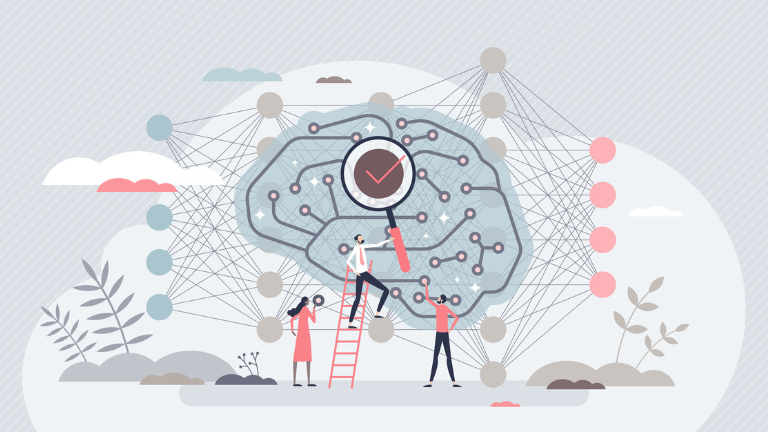Challenges and future of deep learning
Nowadays, most people are using technologies to reduce time by using AI. In AI, we have machine learning (ML). By using this, we are doing smart work and reducing the time on the job. In machine learning, we have deep learning (DL) AI, and deep learning has massive potential, and its applications are second to none.
Challenges of deep learning| Deep learning has seen tremendous advancements and successes in various fields, from natural language processing and computer vision to game playing and robotics. However, several challenges persist, and the future of deep learning will likely involve addressing these obstacles and exploring new frontiers. Here’s a detailed look at the challenges and future directions for deep learning.
Challenges in Deep Learning

1.Data Requirements:
High-Quality Data: Deep learning models require large amounts of labeled data for training. Obtaining high-quality, annotated datasets can be time-consuming and expensive.
Data Privacy and Security: Handling sensitive data, such as medical or personal information, raises concerns about privacy and security.
2.Computational Resources:
Hardware Requirements: Training state-of-the-art deep learning models demands significant computational power, often requiring specialized hardware like GPUs or TPUs.
Energy Consumption: The energy costs associated with training deep models are substantial, leading to environmental concerns.
3.Model interpretability and explainability:
Black-Box Nature: Deep learning models are often seen as black boxes, making it difficult to understand and interpret their decision-making processes.
Trust and Accountability: Lack of interpretability can hinder the adoption of deep learning in critical applications where trust and accountability are essential, such as healthcare and finance.
4.Generalization and robustness:
Overfitting: Models can overfit to the training data, performing poorly on unseen data.
Adversarial Attacks: Deep learning models are vulnerable to adversarial attacks, where small perturbations to input data can lead to incorrect predictions.
5.Transfer Learning and Domain Adaptation:
Domain Specificity: Models trained on specific datasets may not perform well in different domains or under different conditions.
Transferability: Developing methods for effective transfer learning and domain adaptation remains a significant challenge.
6.Ethical and Social Implications:
Bias and Fairness: Deep learning models can inadvertently learn and perpetuate biases present in the training data, leading to unfair outcomes.
Job Displacement: Automation powered by deep learning could lead to job displacement in certain industries, raising socio-economic concerns.
Future Directions of Deep Learning

1.Advances in Model Architectures:
Neural Architecture Search (NAS): Automated methods for designing neural network architectures can lead to more efficient and effective models.
Transformers and Beyond: The success of transformer models in NLP is extending to other domains, and further innovations in architectures are expected.
2.Self-Supervised and Unsupervised Learning:
Reduction in Labeled Data Dependence: Techniques that leverage self-supervised and unsupervised learning can reduce the need for large labeled datasets.
Representation Learning: Learning useful representations from unlabeled data will enhance model performance and transferability.
3.Federated Learning and Edge AI:
Privacy-Preserving Learning: Federated learning allows models to be trained across decentralized devices without sharing raw data, enhancing privacy.
Edge Computing: Deploying deep learning models on edge devices can reduce latency and bandwidth usage, enabling real-time applications.
4.Explainable AI (XAI):
Interpretability Tools: The development of tools and techniques for interpreting and explaining model decisions will build trust and facilitate regulatory compliance.
Transparent Models: Research into inherently interpretable models aims to create systems that are both accurate and understandable.
5.Scalability and Deployment:
Model Size and Complexity: As models become larger and more complex (e.g., GPT-3, GPT-4), deploying them efficiently becomes a challenge.
Real-Time Processing: Ensuring real-time or near-real-time performance for applications like autonomous vehicles and financial trading systems is demanding.
6.Ethical Data Sourcing:
Consent and Ownership: Ensuring that data used for training is ethically sourced with proper consent and ownership rights.
Data Diversity: Ensuring that datasets are diverse and representative to prevent biased outcomes.
7.Integration with Other Technologies:
IoT Integration: Combining deep learning with Internet of Things (IoT) technologies for smarter, more adaptive systems.
Blockchain for Data Integrity: Using blockchain to ensure the integrity and traceability of data used in deep learning models.
8.Cognitive Bias in AI Development:
Human Biases in Model Development: Addressing biases that developers might unintentionally introduce during model development.
Ethical Considerations in AI Design: Ensuring ethical considerations are integrated into the design and implementation of AI systems.
Further Future Directions of Deep Learning

Hybrid Models:
Combining Symbolic AI with Deep Learning: Integrating the strengths of symbolic AI (logic, reasoning) with deep learning is crucial for building more robust AI systems. Additionally, this integration enhances the flexibility and adaptability of AI models.
Neuro-symbolic AI: developing models that can handle both low-level perception tasks and high-level reasoning.
Neuroscience-Inspired Models:
Brain-Inspired Architectures: Drawing inspiration from neuroscience to develop architectures that mimic brain functions more closely is essential. Moreover, by emulating neural processing principles, these architectures can enhance the efficiency and intelligence of AI systems.
Neuromorphic Computing: Leveraging specialized hardware that mimics neural structures to achieve more efficient computation.
Augmented reality (AR) and virtual reality (VR):
Enhanced Interactivity: Using deep learning to create more interactive and realistic AR and VR experiences.
Immersive Training and Education: Applying deep learning in AR/VR for immersive training environments and educational tools.
Human-AI Collaboration:
Augmenting Human Capabilities: Developing systems that enhance human decision-making and creativity rather than replacing them.
Interactive AI Systems: Creating AI that can effectively collaborate with humans, understanding context and intent.
Bioinformatics and Genomics:
Precision Medicine: Using deep learning to analyze genetic data for personalized treatment plans.
Drug Discovery: Accelerating the discovery of new drugs by predicting molecular interactions and outcomes.
Economic and social impact:
AI in Developing Economies: Leveraging AI to address challenges in education, healthcare, and agriculture in developing economies is crucial for driving socio-economic development and improving quality of life. Furthermore, by harnessing the potential of AI technologies, these sectors can benefit from enhanced efficiency, accessibility, and affordability of services, thereby contributing to sustainable growth and equitable development.
Job Market Transformation: Preparing the workforce for changes brought about by AI through reskilling and education.
Legal and Regulatory Frameworks:
AI Governance: Establishing frameworks to govern the ethical use and development of AI technologies.
Compliance and Standards: Developing industry standards for AI development and deployment is crucial to ensure safety, fairness, and transparency. Additionally, clear guidelines promote trust and innovation in the field.
Personalized AI:
Customizable Models: Creating personalized models for applications such as personal assistants and recommendations is essential for enhancing user experience and engagement. Moreover, by tailoring recommendations to individual preferences and behaviors, these models can significantly improve satisfaction and utility. Consequently, by incorporating user-specific preferences and behavior patterns, these models can provide more tailored and relevant recommendations, thereby improving overall satisfaction and utility.
Adaptive Learning Systems: Developing systems that can adapt to user feedback and changing environments in real-time is crucial. Furthermore, by incorporating user input and environmental changes, these systems remain responsive and relevant.
Conclusion
Challenges of deep learning : These additional points further elaborate on the multifaceted challenges and future pathways in the field of deep learning, highlighting the need for a holistic and interdisciplinary approach to continue advancing the technology while addressing its broader implications.

